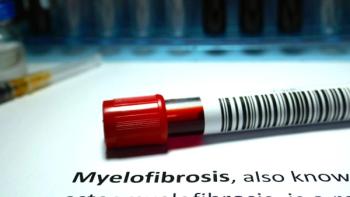
To Build Healthy Futures, Survivors Must Pursue Monitoring After Melanoma Treatment
With greater longevity for survivors of melanoma comes the need to treat lingering side effects and monitor for cancer recurrences.
Though not all melanomas are curable, many advanced cases can be treated over the long term as chronic conditions. That means survivors may spend years living with melanoma-related issues, from side effects such as lymphedema to the need for ongoing screenings.
At a conference held by Penn Medicine’s Abramson Cancer Center in Philadelphia, nurse practitioner Suzanne McGettigan told a room full of patients and survivors how they could best contribute to their own healthy futures.
Dealing with Side Effects
Because patients can be treated with a range of approaches — including surgery, radiation and medical strategies such as targeted drugs, immunotherapy or chemotherapy — their side effects can vary widely, McGettigan said.
Radiation can cause skin changes and weaken bones in the targeted part of the body. Surgery can lead to scarring, pain, skin tightness and loss of functionality. Drugs can cause a wide array of effects: With targeted therapies can come joint pain, nausea, fatigue, hair loss, rash and blurred vision; and immunotherapy and chemotherapy can bring on infertility and early menopause, hormonal effects and organ damage.
With immunotherapy, in particular,
“Any organ system can be affected when receiving immunotherapy, because it’s revving up the immune system and can cause inflammatory changes in any part of the body,” McGettigan said. “Side effects can be neurologic or in the liver, (gastrointestinal) tract, lungs or skin. A main thing for you is to keep track of anything that’s different from how you feel on the day you start your immunotherapy. Call and let us know. We have to know what side effects you’re having in order to manage them. You know best if something has changed. Let us sort out whether it’s from treatment or something else.”
Rarely, secondary cancers can arise after patients have taken chemotherapy, targeted drugs or radiation. And both surgery and radiation can give rise to the much more common lymphedema, a swelling of the limbs caused by fluid retention due to the surgical removal of lymph nodes, she said; nodes may be removed due to cancer’s spread or for biopsy.
Lymph is a clear fluid that contains white blood cells. The body’s lymphatic system is a network of vessels that drains lymph from tissues into the blood. When lymph nodes are removed or damaged, blockages in the system can occur, causing lymph to pool in one area. Lymph nodes are located throughout the body, but some key areas that can be affected by melanoma treatment are under the arms and in the groin area, McGettigan said.
“If a patient develops it, we monitor that area very closely,” she said. “We want to be on top of changes to do appropriate therapy to prevent lymphedema from developing or getting any worse and causing more symptoms.”
A lymphedema therapist is a specially trained physical or occupational therapist. Using manual lymphatic draining through specialized massage, these professionals train a patient’s remaining lymph nodes to take over, McGettigan said. She added that compression garments and
When these techniques are not effective, patients can consider newer surgical solutions, which include connecting remaining lymphatic vessels together so that they move lymph past a blocked area, and transplanting lymph nodes into the damaged area from other parts of the body.
Those who have not had any lymph nodes removed, but whose care teams are recommending it, can ask why and whether the procedure is necessary.
Moving Into Survivorship
The end of treatment does not mean that survivors will say goodbye to their care teams.
“We want your primary care provider to be aware of your diagnosis and what therapy you had for it,” McGettigan said. “You’ll continue to see a dermatologist, and maybe a medical, surgical or radiation oncologist, depending on your stage and what therapies you had.”
Survivors should continue to watch for new melanomas or other skin cancers by undergoing a skin and lymph node check at least annually for life, and imaging scans and laboratory studies as needed based on the melanoma’s stage, the treatments used and the time since completion of therapy. Of course, they should also receive treatment for any long-term or late-occurring side effects of treatment, such as endocrine changes. Beyond that, McGettigan recommended that survivors treat any other health conditions they might have, such as blood pressure or high cholesterol, undergo routine cancer screenings such as colonoscopies and mammograms, and stay up to date on immunizations for conditions including flu, pneumonia and shingles.
At Penn, the medical oncology team helps to coordinate all this and hopes, in the near future, to draw up a comprehensive treatment summary and survivorship care plan for each patient who finishes melanoma therapy.
A survivorship care plan lists a survivor’s health and treatment history, the follow-up care needed, the specialists who should provide the care and how often. The plan may also suggest measures for attending to a patient’s emotional, financial, legal or lifestyle needs. McGettigan said that survivors can create these plans with their care teams or on their own with the help of organizations such as
“It’s important for you to have a copy of your pathology reports and a good idea of what your medical history consists of, and share that with future health care providers,” she said. “Also, share your history of melanoma with your family members so they can be screened by a dermatologist.”
McGettigan added that “We rely on you to monitor by doing a self-skin exam about once a month. Look for bumps, lumps or changes in moles or lymph nodes. It’s all important to report. And if you had any systemic therapy (such as chemotherapy or immunotherapy) and notice any new symptoms, let us know.”
Finally, McGettigan encouraged sun-protective behaviors such as wearing appropriate cover — hats, shirts, sunglasses and sunscreen — and avoiding tanning salons. To enhance general good health, she suggested that survivors stop or avoid smoking, maintain a healthy weight, increase physical activity, eat a diet that includes lots of fruits, vegetables and whole grains, and moderate alcohol consumption.
“It’s important to still live your life, to continue doing everything you want to do and have been doing,” she said, “and we are here to support you during that time.”





